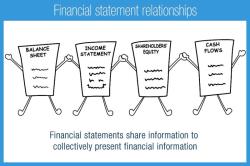How to claim homebuyer credit?
The First-Time Homebuyer Credit was a tax credit offered by the U.S. government to help first-time homebuyers with the costs of purchasing a home. However, the specific rules and availability of this credit may change over time. To claim the First-Time Homebuyer Credit (if it's still available), you would typically need to follow these steps:
Check Eligibility: Ensure that you meet the eligibility requirements for the First-Time Homebuyer Credit. In general, this credit is available to individuals who have not owned a primary residence in the three years leading up to the purchase.
Complete IRS Form 5405: If you are eligible, you'll need to complete IRS Form 5405, which is specifically used to claim the First-Time Homebuyer Credit. You can find this form on the IRS website or at your local IRS office.
Gather Documentation: You may need to provide documentation to support your claim. This can include documents related to the purchase of your home, such as the settlement statement (HUD-1), proof of occupancy, and other relevant paperwork.
File Your Tax Return: Include Form 5405 when you file your federal income tax return. You'll need to file a paper return, as electronic filing may not be available for this credit. Be sure to follow the instructions on the form.
Claim the Credit: On Form 5405, you will calculate the amount of the First-Time Homebuyer Credit you are eligible for. The credit amount was generally up to $8,000 for first-time homebuyers and $6,500 for long-time residents (those who owned and lived in their previous residence for at least five consecutive years out of the eight years leading up to the purchase of a new home). The credit was subject to income limits.
Attach Supporting Documents: If required, attach the necessary supporting documents, such as a copy of your settlement statement, to your tax return.
Submit Your Tax Return: Mail your completed tax return, including Form 5405 and any required documentation, to the IRS. Be sure to send it to the appropriate address based on your location.
Monitor for Updates: It's important to stay informed about changes in tax laws and regulations. The availability of the First-Time Homebuyer Credit and its specific requirements can change from year to year.
Please note that tax laws can change, and credits and deductions may be modified or phased out over time. To get the most accurate and up-to-date information on claiming tax credits, consult the IRS website or consider working with a tax professional or advisor who can provide guidance based on your specific circumstances and the most current tax laws.
A Guide to Claiming the Homebuyer Credit
The homebuyer tax credit is a tax credit that can be claimed by first-time homebuyers and certain homeowners who purchase a new home. The credit can be used to offset the cost of purchasing a home, including the down payment and closing costs.
To be eligible for the homebuyer tax credit, you must meet the following requirements:
- You must be a first-time homebuyer, or you must have not owned a home in the past three years.
- You must purchase your home as your primary residence.
- You must meet certain income requirements.
If you meet all of the eligibility requirements, you can claim the homebuyer tax credit when you file your federal income tax return.
Steps to Take When Applying for the Homebuyer Credit
To apply for the homebuyer tax credit, you will need to complete Form 5405, Credit for First-Time Homebuyers. This form can be found on the IRS website.
When completing Form 5405, you will need to provide information about your home purchase, such as the purchase price of the home, the date of the purchase, and your income. You will also need to attach documentation to support your claim, such as a copy of your closing statement and a copy of your tax return for the previous year.
Once you have completed Form 5405, you can mail it to the IRS along with your federal income tax return.
Navigating the Process of Claiming the Homebuyer Tax Credit
The process of claiming the homebuyer tax credit is relatively straightforward. However, there are a few things you should keep in mind:
- You must meet all of the eligibility requirements to claim the credit.
- You must complete Form 5405 and attach supporting documentation.
- You must mail Form 5405 to the IRS along with your federal income tax return.
If you have any questions about the homebuyer tax credit, you can contact the IRS for assistance.
Here are some additional tips for navigating the process of claiming the homebuyer tax credit:
- Start early. The homebuyer tax credit is a popular credit, so it is important to start the application process early. This will help to ensure that your application is processed in a timely manner.
- Gather all of the necessary documentation. Before you start filling out Form 5405, make sure that you have gathered all of the necessary documentation. This will help to ensure that your application is complete and accurate.
- Be accurate. When completing Form 5405, be sure to be as accurate as possible. Any errors on your application could delay processing or even result in your application being rejected.
- Keep a copy of everything. Once you have submitted your application, be sure to keep a copy of everything you submitted. This will help you to track the status of your application and to resolve any issues that may arise.
If you have any questions or concerns about claiming the homebuyer tax credit, be sure to contact a qualified tax professional for assistance.













